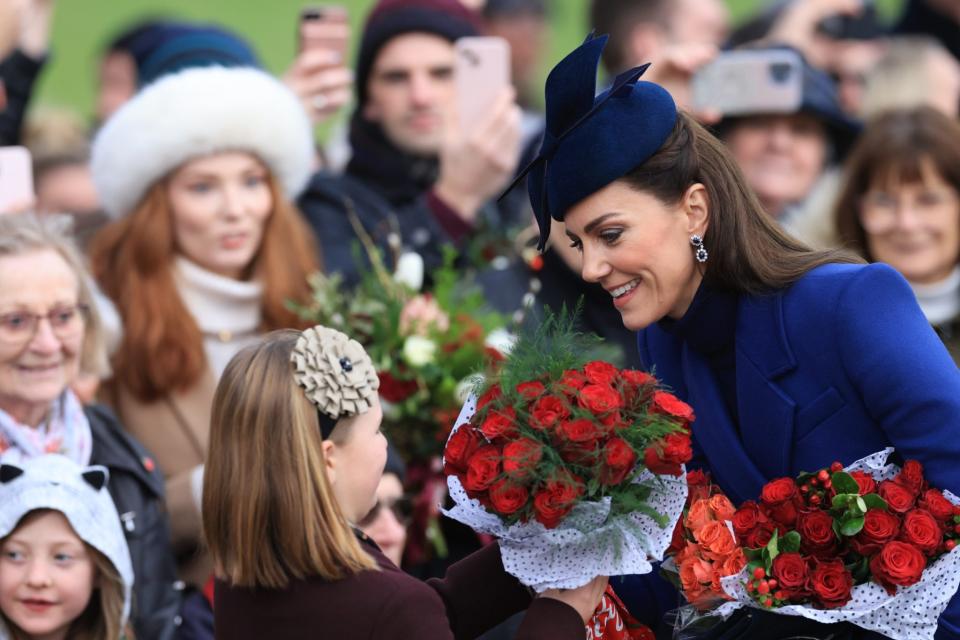Kate Middleton’s Mother’s Day photo was meant to combat conspiracies. But the ‘attention economy’ is fueling more rumors than ever

The royal family’s activities have always been a subject of interest—but in recent times, rumors have taken a wild turn.
Kate Middleton, the Princess of Wales, has been away from the public eye since Christmas. Kensington Palace said she has been recovering from a surgery, but social media users haven’t totally bought that. Conspiracy theories have been swirling on various platforms, from X (formerly Twitter) to Reddit, for the better part of two weeks.
The whole affair took a new twist this weekend, when the royal family posted a picture of the Princess of Wales with her three children to mark Mother’s Day. A number of publications, including the Associated Press, shared the picture issued by the Kensington Palace—before abruptly taking it down.
Their reason? The seemingly happy image, which features the four royal family members smiling, was suspected to be manipulated, adding more fuel to the speculative fire on the princess’s absence.
The photo was credited to William, the Prince of Wales, last week, according to the AP. The news outlet clarified that there was no confirmation on whether the image was a fake, but said that upon scrutiny, it didn’t meet its photo standards, forcing it to retract the photo.
Kensington Palace didn’t immediately return Fortune’s request for comment.
News of the image being pulled from AP comes amid growing curiosity over the Princess of Wales’s whereabouts. For its part, Kensington Palace said in a statement that Middleton wouldn’t serve her public duties until after Easter. But gossip carried on anyway across social media, with some speculation taking absurd spins (like the one about her getting lost at the Willy Wonka fair in Glasgow).
The Mother’s Day photo of the Princess of Wales was meant to resist rumors surrounding her disappearance, but when acclaimed news outlets pulled the photo down, it made matters worse.
“This is damaging for the royals,” Peter Hunt, a former royal correspondent for the BBC, said on X, formerly Twitter. “They knew there would be intense interest in any picture they released of Kate. Their challenge is that people will now question whether they can be trusted and believed when they next issue a health update.”
On Monday, the Princess of Wales admitted to editing the picture and apologized "for any confusion" surrounding the authenticity of the photo.
"Like many amateur photographers, I do occasionally experiment with editing," she said in a post on X Monday.
'Attention economy' fueling the speculation?
Hysteria surrounding the royal family has been around since well before the social media era. But platforms are fueling the “attentional economy,” giving them far more mileage and importance among the public, Marcus Gilroy-Ware, a lecturer in creative digital media at University of London’s SOAS, told Fortune in an interview.
“Misinformation wouldn't have nearly as much chance of spreading if not for the fact that getting attention on digital and internet platforms is itself highly rewarded. So things don't need to be true anymore…meanwhile getting lots of attention, lots of views, lots of clicks, is extremely valuable,” Gilroy-Ware said.
The photo of Princess Kate is a case in point—it had received 50 million views on X by the end of Sunday, the AP reported.
There’ve been instances in the past where doctored photos of high-profile figures have been widely circulated on the internet, without their veracity being checked. Take the Pope’s photo in a puffer jacket, for example.
If, in fact, the image of the princess with her kids was doctored or manipulated, the irony of the situation could be hard to shake off as it was meant to resist rumors. It’ll also be the first of its kind, Gilroy-Ware points out.
“Speculating about the royals is an old cultural phenomenon, and it's not going anywhere,” he said. “In the present case, what's very interesting is there'll be one kind of misinformation being put out in order to prevent another kind of misinformation, and that is something new. I don't think I've seen a mainstream example of that before.”
Editor's Note: This article has been updated to include the Princess of Wales's statement.
This story was originally featured on Fortune.com

 Yahoo Finance
Yahoo Finance 